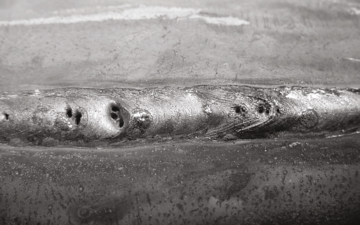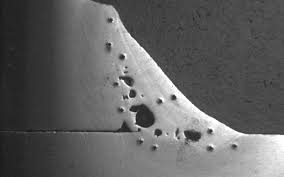Comprehensive Guide: What is Porosity in Welding and Exactly How to avoid It
Comprehensive Guide: What is Porosity in Welding and Exactly How to avoid It
Blog Article
Deciphering the Mystery of Porosity in Welding: Tips for Lessening Defects and Optimizing Quality
In the complex globe of welding, porosity continues to be a consistent difficulty that can considerably affect the top quality and stability of bonded joints. As we delve into the depths of porosity in welding, uncovering the tricks to its prevention and control will be critical for specialists looking for to master the art of high-quality weldments.
Understanding Porosity in Welding
Porosity in welding, a common concern come across by welders, describes the presence of gas pockets or voids in the bonded product, which can endanger the stability and high quality of the weld. These gas pockets are normally caught during the welding process due to numerous variables such as incorrect securing gas, polluted base materials, or inaccurate welding specifications. The formation of porosity can damage the weld, making it at risk to cracking and corrosion, ultimately leading to structural failings.
By identifying the relevance of maintaining proper gas securing, ensuring the sanitation of base products, and maximizing welding settings, welders can considerably minimize the chance of porosity development. In general, a thorough understanding of porosity in welding is vital for welders to produce high-grade and long lasting welds.

Usual Root Causes Of Porosity
When inspecting welding processes for potential quality issues, recognizing the common causes of porosity is essential for preserving weld honesty and protecting against architectural failings. Porosity, defined by the existence of tooth cavities or spaces in the weld steel, can significantly endanger the mechanical residential or commercial properties of a welded joint.
Additionally, welding at improper specifications, such as exceedingly high travel speeds or currents, can generate excessive turbulence in the weld pool, trapping gases and causing porosity. By resolving these usual reasons with proper gas securing, material prep work, and adherence to optimal welding parameters, welders can decrease porosity and improve the high quality of their welds.
Strategies for Porosity Avoidance
Executing effective safety nets is essential in lessening the incident of porosity in welding processes. One technique for porosity avoidance is guaranteeing appropriate cleaning of the base metal prior to welding. Pollutants such as oil, grease, corrosion, and paint can lead to porosity, so extensive cleaning using appropriate solvents or mechanical methods is crucial.

An additional trick preventive action is the choice of the ideal welding consumables. Utilizing top quality filler materials and shielding gases that appropriate for the base steel and welding process can dramatically lower the threat of porosity. Additionally, keeping appropriate welding criteria, such as voltage, present, take a trip rate, my site and gas flow price, is essential for porosity avoidance. Differing the suggested setups can cause inappropriate gas coverage and poor fusion, resulting in porosity.
Additionally, utilizing correct welding techniques, such as keeping a regular traveling speed, electrode angle, and arc size, can aid avoid porosity (What is Porosity). Appropriate training of welders to guarantee they comply with finest techniques and quality assurance procedures is also essential in decreasing porosity flaws in welding

Finest Practices for High Quality Welds
One key technique is preserving proper sanitation in the welding area. Extensively cleaning up more the workpiece and bordering location before welding can aid mitigate these problems.
One more finest method is to very carefully pick the ideal welding criteria for the details products being signed up with. Appropriate specification choice ensures optimal weld penetration, fusion, and overall top quality. Making use of top notch welding consumables, such as electrodes and filler metals, can significantly influence the last weld top quality.
Relevance of Porosity Control
Porosity control plays an essential role in guaranteeing the integrity and quality of welding joints. Porosity, identified by the presence of dental caries or spaces within the weld metal, can dramatically endanger the mechanical residential properties and architectural stability of the weld. Too much porosity damages the weld, making it a lot more vulnerable to breaking, corrosion, and overall failing under functional tons.
Reliable porosity control is necessary for preserving the wanted mechanical residential properties, such as strength, ductility, and durability, of the welded joint. What is Porosity. By decreasing porosity, welders can improve the total high quality and reliability of the weld, making certain that it satisfies the performance demands of the desired application
In addition, porosity control is important for attaining the preferred visual appearance of the weld. Excessive porosity not only damages the weld but likewise you can check here interferes with its visual allure, which can be critical in sectors where appearances are vital. Correct porosity control techniques, such as utilizing the right securing gas, regulating the welding parameters, and making sure proper tidiness of the base materials, are crucial for producing top notch welds with minimal flaws.

Conclusion
In conclusion, porosity in welding is an usual issue that can compromise the top quality of the weld. It is necessary to manage porosity in welding to make sure the stability and toughness of the last item.
Report this page